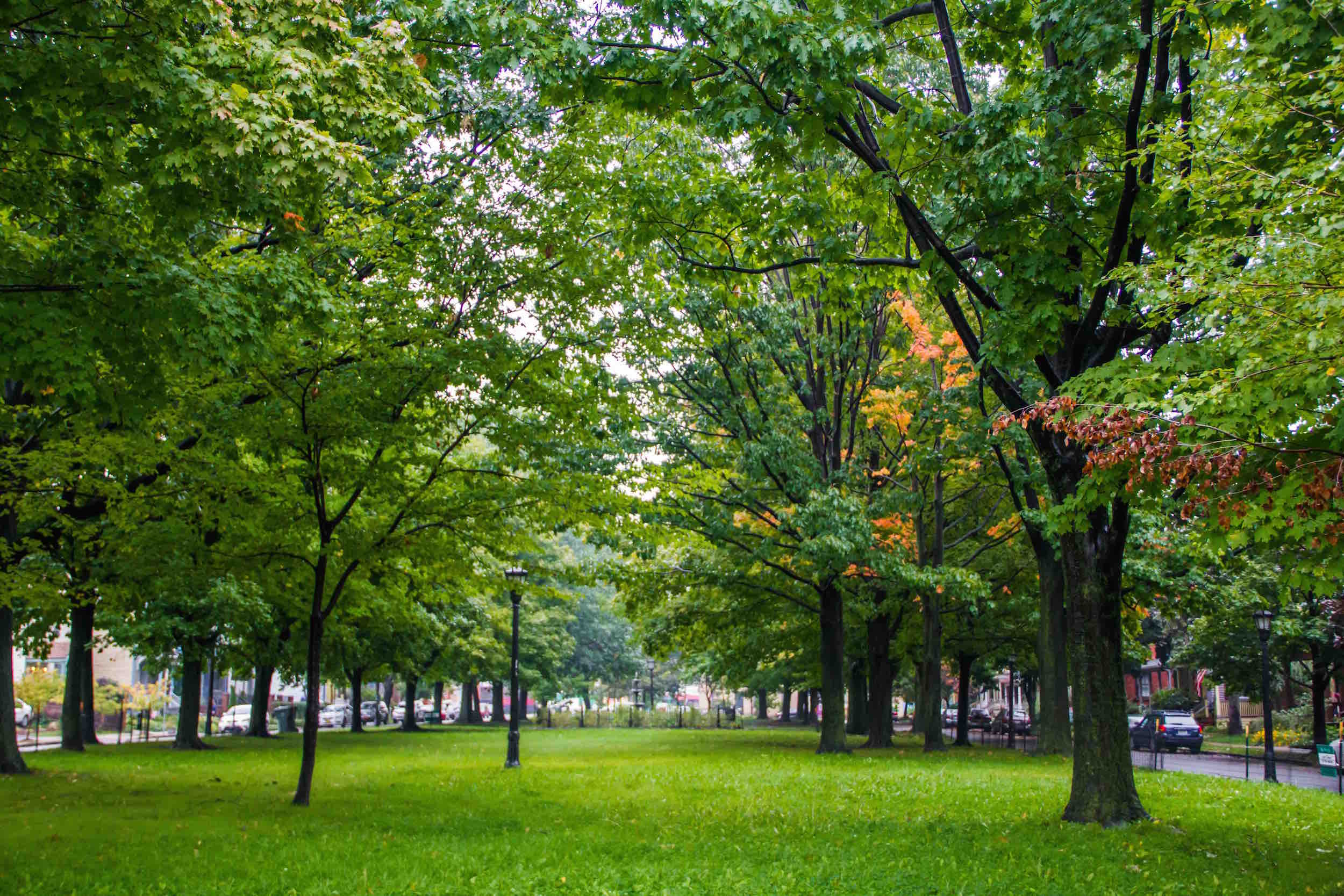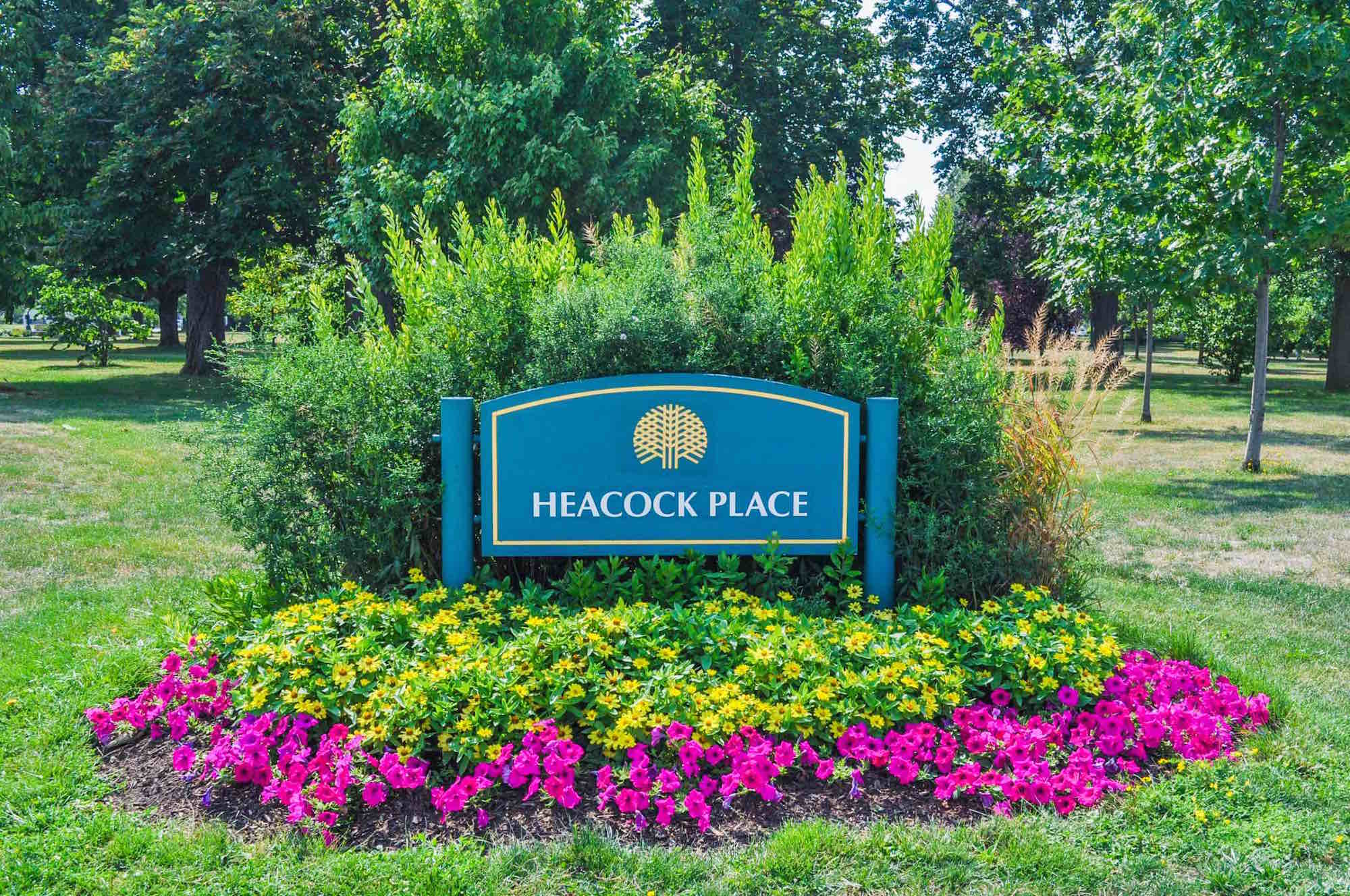Days Park
Frederick Law Olmsted began his work for Buffalo in 1868. Days Park was not one of his originally designed parks, but after the responsibility of the Board of Park Commissioners was expanded to encompass all public greens and squares in Buffalo in 1886, the Board sought designs for several new small grounds from Olmsted. In April of 1887, he submitted plans, including plans for Days Park. One feature of the plan was a fountain, the only one specified by him for a Buffalo site. Unfortunately the original Days Park fountain was removed in 1923.
Days Park was extensively restored in 1989 and 1990 as result of the efforts of the neighboring residents through the Days Park Block Club. The fountain, surrounded by a wrought iron fence in the same manner as the original, was restored as a centerpiece of the delightful little park. Unfortunately thieves masquerading as city workers stole the fountain in 1999; it wasn’t until 1999 that funds were finally made available to again replace it. Aside from small changes, Days Park very much remains the way Olmsted had envisioned it.
Heacock Place
Heacock Place is a three-acre park site that forms the beginning of the Cazenovia Park System. As the Buffalo park system was expanded by the creation of new parks, additional park approaches were added as well. In the south, what have come to be called the South Side parkways were laid out. McKinley Parkway (originally called “South Side Parkway”) links South Park and an existing non-Olmsted green space incorporated into the scheme, Heacock Park, to its northeast McKinley Circle (first known as South Parkway Circle) is located at the point where McKinley Parkway leaves Buffalo and enters the City of Lackawana to align with the entrance to South Park.
Prospect Hill Parks (Columbus Park & Prospect Park)
These two small adjacent parks are among the oldest public spaces in Buffalo. Originally a residential square before Niagara Street bisected its center, the eight-acre plot was donated to the city in 1836 by local businessman Hiram Pratt. Its high location gave it an unrestricted view of Lake Erie. By the time Frederick Law Olmsted arrived in Buffalo, residences built on the edge of the parks blocked the lake view. Olmsted lamented this wasted opportunity to expand the two parks to the new Front Park.
In 1870 the city incorporated these two parks under the authority of the new Parks Commission, which was overseeing construction of Buffalo’s new Olmsted-designed park system. A full-time keeper fed the squirrels and kept the parks in a neat and orderly condition. Prospect Park was so densely forested that many of its trees were transplanted by special tree moving machines to enhance the new Front Park. Changes to the park surroundings began in 1878 when Pierce’s Palace Homeopathic Hospital opened where D’Youville College is now. The open park land and the refreshing lake breezes were thought to restore good health. A statue of Christopher Columbus was erected in 1952. A public library was built on the grounds in 1957.





